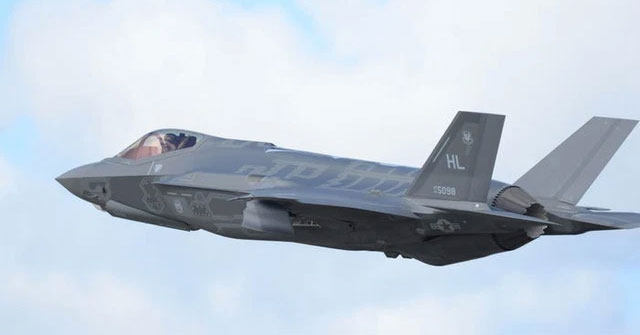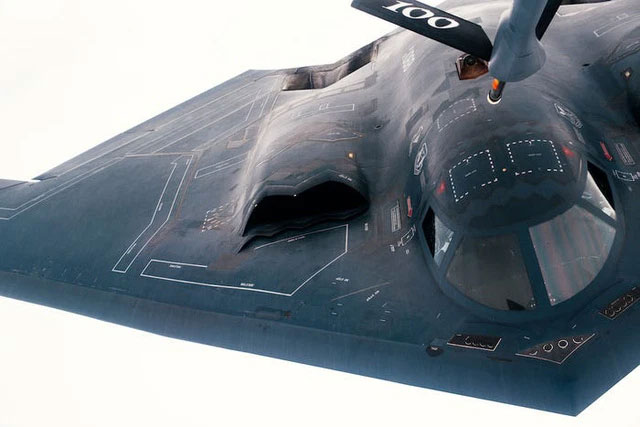The truth about 'stealth planes' and why they are so hard to hide in the sky
Stealth, should be understood as a range of technologies, designs, production methods, and combat tactics.
When discussing stealth, especially with regards to aircraft, it is not uncommon for people to treat it as if stealth were some strange feature that fighters or bombers would not. "Yes or no".
The truth is, it's a little more complicated than that. But, the simplest way to think about it is a combination of factors to delay or limit enemy detection, to make an aircraft more survivable.
Stealth is not invisible on radar

An F-35 takes off.
Famous stealth planes you may have heard of like the B-2 Spirit or the F-35 Joint Strike Fighter have a number of factors in place to limit their visual signature or how easily they can be spotted in the sky. heaven, but they're certainly not invisible.
Contrary to popular misconception, stealth also doesn't actually make an aircraft invisible to radar. In fact, many stealthy aircraft are clearly visible on radar designed to take advantage of the lower frequency VHF and UHF bands.
So the goal of stealth is not always to avoid detection… but more or less to avoid being shot down.
The most commonly understood aspect of stealth is how it can defeat, prevent or delay detection from enemy radar systems both on the ground and on enemy fighters.
Modern stealth programs take a multifaceted approach to this, taking advantage of advanced designs to deflect radar waves away from aircraft, as well as radar-absorbing materials.
Stealth Design

An F-117 Nighthawk
Having a design specifically tailored to deflect radar waves away from an aircraft is an intrinsic part of the design movement of the fifth generation fighter, and most appreciated is the F-117 Nighthawk.
The Nighthawk's unusually angular appearance represents that today's best computers are able to calculate radar deflection. Meanwhile, the sleek and sleek F-35 Joint Strike Fighter proves just how far our computing power has come in the field. The F-35 has more curves than hard angles, but the design goal remains the same.
"The shape of the plane is designed to deflect radar energy away from the source like a tilted mirror," said Harold Carter, senior research science manager at Lockheed Martin Corp. Model F-35 said. "Its surface is also blended and smoothed to allow radar energy to pass through it smoothly - similar to water flowing on a smooth surface."
Radar Absorber Material

F-22 Raptor fighter jet.
But design alone won't be enough. The leading edge of an aircraft's wings, air intakes, parts of the vertical tail surface and other parts of a fighter jet all tend to generate radar echoes, and they cannot be eliminated through the air. through advanced designs.
As a result, you will often find people using radar absorbing materials on these parts of the plane. These are called radar absorbent materials or simply RAM.
'RAM works on the principle that aircraft absorb electromagnetic wave energy to minimize the intensity of the reflected signal,' Adrian Mouritz, writes in his academic textbook 'Introduction to Aerospace Materials'.
"It is possible to reduce the radar cross section of a fighter aircraft to the size of a mid-range bird, through optimized design and the application of stealth technologies."
The RAM used by modern American fighters is extremely important, as it is rated to absorb up to 70%-80% of the incoming electromagnetic energy. But it is also expensive and time consuming to maintain. Their high heat handling is also an issue, and they have even been known to limit the ability of some stealth fighters to maintain supersonic speeds.
Manufacturing Tolerance

A B-2 stealth bomber during aerial refueling.
But the design calculations and the cost of RAM alone would not make it so difficult to control a stealth fighter or bomber. One of the least discussed, but most important, is the ability to fabricate them with extremely tight manufacturing tolerances.
Even a small gap between the fuselage plates on a stealth fighter can make it easier to detect on radar, so assembling a stealth plane is a painstaking, demanding process. lots of expertise and some pretty expensive equipment.
'If the aircraft's external structural components are precisely machined to fit together to exceptionally small tolerances, stealth requirements can be more easily met,' Robert Jones writes in an article published by the Society of Manufacturing Engineers.
"That is to say, the reduction and near-elimination of voids between structural elements is highly desirable in achieving the stealth characteristics of an aircraft."
The ability to build aircraft with extremely low tolerances is one of the ways the US maintains its stealth advantage, even as competitors have begun to equip stealth aircraft of their own.
After all, stealth is a broad concept, and the tighter your manufacturing tolerances, the lower the chances of an aircraft being detected.
For example, the stealthy F-22 Raptors were built in the 1990s and 2000s with a build tolerance of about 1/10,000th of an inch. This sounded quite unbelievable at the time, but the vulnerabilities still had to be treated with tape, buffer and RAM to maintain the aircraft's stealth.
Today's F-35s are said to be assembled to even tighter manufacturing tolerances, even to "scale to order". But it's still not too strange to see potential gaps on the fuselage covered by RAM.
Infrared and electromagnetic parts

An F-35 . stealth aircraft
Modern stealth aircraft not only have to deal with enemy radar, and therefore modern stealth programs must also limit the infrared and electromagnetic signatures of enemy jets.
An easy way to think of an aircraft's infrared signature is the heat the plane generates. The hotter something is, the easier it is to see, to track, and more likely to be shot down. The point, of course, is that we power our stealth planes by mixing air with fuel and creating an explosion… and the explosions are usually quite hot.
To mitigate all that heat, stealth planes typically place their engines deep inside the fuselage with visors around the exhaust to diffuse the heat as it radiates. This approach also helps to reduce the aircraft's visual and audio signals, or simply its noise level, and how easily it can be detected in the sky with the naked eye.
Therefore, the comprehensive research and design of the exhaust system has great significance for the stealth performance of the aircraft. However, not all "stealth" aircraft effectively cover the engines. But that doesn't make them invisible anymore, it just means they lack these stealth elements, and move closer to the "observable" limit.
But that's still not the end of the stealth story, because modern stealth planes also take advantage of electronic warfare suites designed to interfere with detection vehicles or even close communications. there. Because even a "stealth" fighter can be detected under different circumstances, sometimes stealth means taking a proactive approach to survivability.
Stealth Tactics

A US Air Force pilot climbs aboard an F-22 Raptor.
In the end, even with all the stealth you can cram into an airplane, the job isn't done. American pilots spend countless hours planning their combat operations to ensure that they are operating to greater advantage whenever possible.
That means using topographic maps, known enemy locations and equipment, and understanding your aircraft to create plans to minimize exposure to defenses. of the enemy.
It also means developing plans for how to dodge if something goes wrong without sending $100 million worth of stealth fighters into the middle of the danger zone.
But after all, as Radar Interception Officer (RIO) on the famous F-14 fighter, Ward Carroll, once shared: "Invisibility has no effect on bullets".
- Revealing the top secret stealth aircraft of America
- Will soon have stealth mats
- Quantum Radar helps detect stealth aircraft
- Email helps to deceive people who lie
- What is stealth technology? How does it work?
- America shows off a stealthy flagship bearing the nickname 'ghost'
- How to safely hide the hard drive
- Successfully making stealth material can make the person behind it disappear!
- Decode the 'invisibility' costume worth half a billion
- How to hide the number and hide caller ID on iPhone and Android
- Video: Stealth octopus super over ninja
- Robot is planning to stealth aircraft in the United States
 The most famous scientific failures in history
The most famous scientific failures in history Mysterious genius mechanic and the machine froze time
Mysterious genius mechanic and the machine froze time The son carries the 'bad gene' of genius Albert Einstein
The son carries the 'bad gene' of genius Albert Einstein Isaac Newton
Isaac Newton